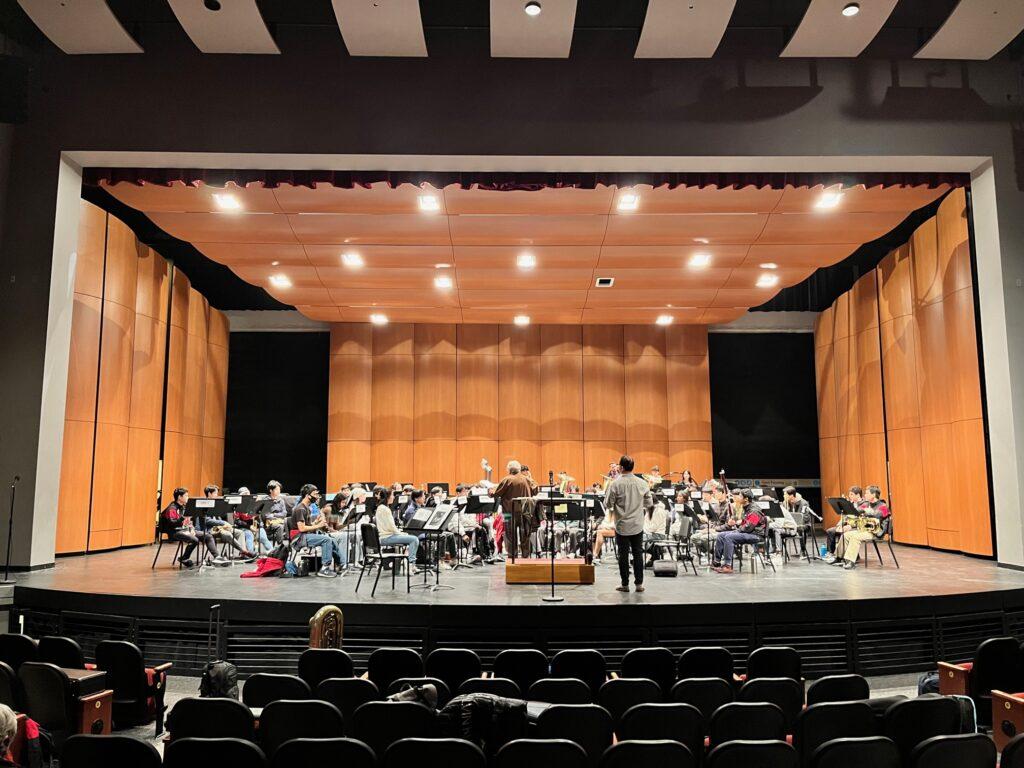With the marching season officially concluded after first semester, the band has taken time to reflect on their accomplishments over the first semester and transition into their concert season. From placing 4th at the WBA NorCal Super Show and attending Cupertino Tournament of Bands (TOB) to winning 1st at the Sierra Cup Classic in Fresno, the band enjoyed a rewarding competition season while building unity as a group.
Now, members are working on classical concert repertoire under the guidance of band director Jason Shiuan and music program director Michael Boitz. The band has separated into the Symphonic Wind Ensemble (SWE) of 59 members, Symphonic Band (SB) of 41 members and the Freshman Band (FB) of 40 members, which is a relatively large freshman class. Select band members play with string players in the Saratoga Symphony Orchestra (SSO), consisting of Saratoga Strings and String Orchestra ensembles.
During concert season, a large contrast for band members is the distinction between SWE and FB/SB. While the two levels of ensembles play together in marching band, they now play different repertoire as two separate ensembles in their respective class periods. As a result, the freshmen and upperclassmen see one another less frequently and no longer “function as one,” senior drum major Petr Tupitsyn said.
However, even across separate ensembles, band members of all grades continue to support and help one another.
“Being together for a semester in marching band set us up for a strong connection with underclassmen,” said senior and principal clarinetist Dyne Lee.
Now, instead of marching on the field 3-4 times a week after school in preparation for competitions, band practices take place solely during school periods.
“Our schedule becomes a lot more relaxed since there’s no more competitions,” Lee said.
During class periods, SWE practices two to three pieces at once to prepare for annual concerts and events that occur in the spring, such as the March music concert and the CMEA (California Music Educators Association) Festival. Some pieces they are currently rehearsing include “The White Rose” by John Philip Sousa and the “Flute Concerto in D Major” by Carl Reinecke, which will be soloed by junior Eric Miao.
After school, select band students commit to SSO rehearsals. SSO, the school’s symphony orchestra and highest level music ensemble, consists of 16 sections of instruments and nearly 100 students total. Students play advanced, college-level repertoire and perform at major school events including the early-May Pancake Breakfast for the community and late-January Electives Night for 8th graders and their parents. They also perform at the music department’s annual concerts. Rehearsals are up to two hours long and occur once or twice per week, on Monday and Wednesday.
For band students, the biggest challenge is not the rehearsal commitment, but rather adjusting to playing with string musicians. According to students interviewed by The Falcon, coordination is a new challenge for symphony playing, where wind and brass instruments like flute, oboe and trumpet play with string instruments like violin and cello.
For example, at some points in symphonic pieces, strings, wind and brass will trade off phrases instead of playing together at all times. During these breaks in the piece, or “rests” in music terminology, musicians must keep track of counts very precisely so they can enter on time. Though band students are not physically moving as they did in a marching band, the focus and attention remains.
“We are normally playing outside on a field, and constantly moving to stay together,” Tupitsyn said. “In a symphony, there are many moments where band musicians don’t play but must stay very alert.”
Band members are excited to make music together again, even in a completely new setting and style. During this upcoming concert season, audiences will get to see a different side of band as they perform lively classical music repertoire.
“Marching season is always enjoyable, but I like that we get a balance between marching together and playing as a stationary ensemble,” Tupitsyn said. “That’s what makes band unique.”




























